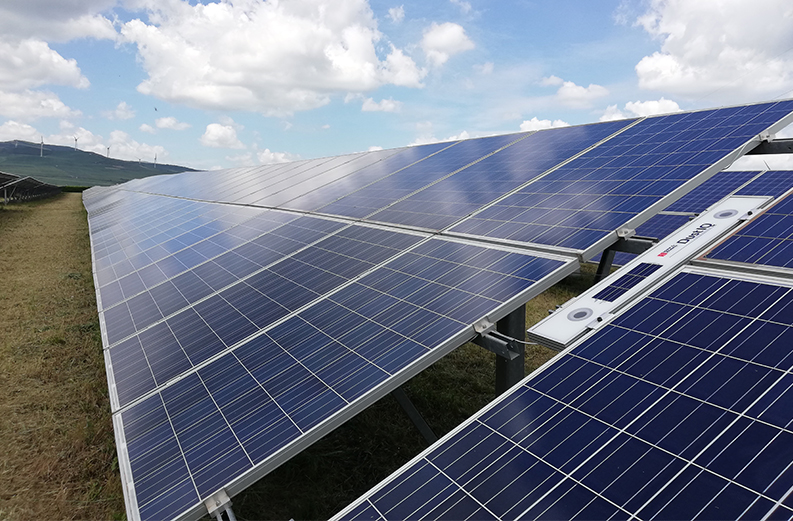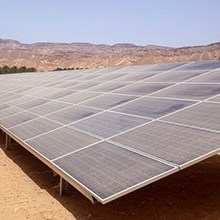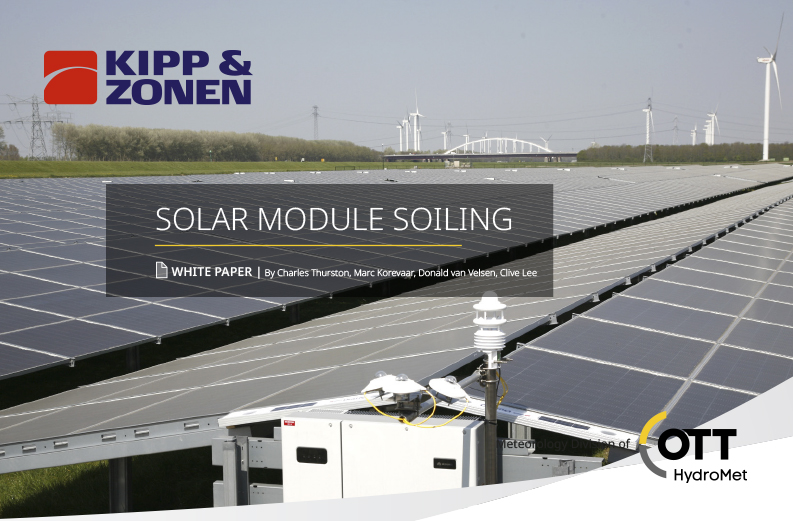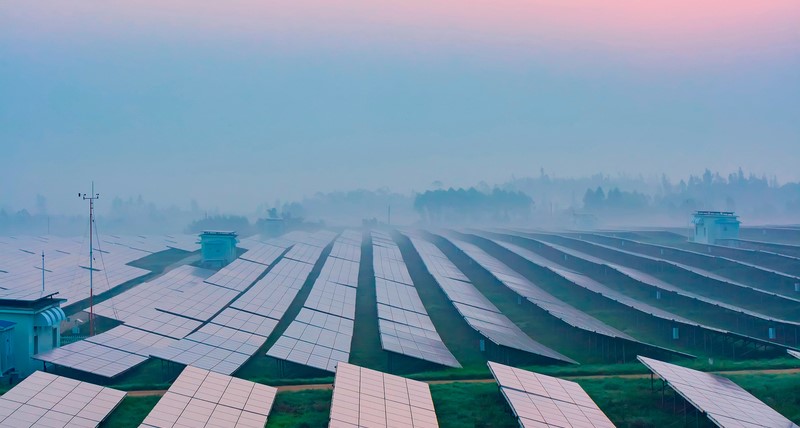Solar energy has emerged as the best technology in the world for new energy installations, with rapidly spreading global acceptance driven by mega-programs, unbelievably at ever lower costs. Technology advances continue to improve the efficiency of solar energy, with the latest double-digit boost coming from bifacial panels. Meanwhile, the expected lifetime of photovoltaic systems has lengthened from an initial 20 year standard to 25 or 30 years in many cases. This is nothing short of amazing.
With such a groundswell of solar growth, what limits the performance of PV systems? The answer is dust, or other forms of soiling that accumulate on the glass surface of solar panels, obscuring light from the embedded cells. Driven by location as well as weather, soiling is worst in deserts like the U.S. Southwest, in the presence of air pollution, and on solar arrays that have flat tilt designs.
Whether the soiling occurs on residential rooftop systems, on commercial or industrial PV installations, or on utility-scale arrays, the effect can be surprisingly large. Moderate soiling that results when panels are not cleaned monthly is generally calculated to result in a 30% energy yield loss per year, while longer term, cumulative soling cementation – hard caking — of dust materials can result in a 100% loss of yield.
Overall, soiling is a complex solar industry problem that increases uncertainty and drives up the cost of solar energy through lost production, increased maintenance costs, and thus higher financing rates, according to analysis by the U.S. National Renewable Energy Laboratory.
Knowing when to clean is the elusive element
A new White Paper on soiling by Kipp & Zonen entitled “Solar Panel Soiling” details the soiling issue from economic, geographic and technical perspectives, with a review of panel monitoring and options for cleaning technology at the end. Understanding soiling is a first step, knowing how to clean is a second step, but knowing when to clean is the elusive element in the soiling solution.
“Being able to measure the soiling losses, seeing the soiling trend line and knowing the local precipitation forecast, makes it is easier to decide whether to clean or wait,” says Donald van Velsen, a product manager at Kipp & Zonen. “Local factories or composting facilities that produce dust can be a factor in areas where one wouldn’t expect PV panel soiling to be an issue, he adds.
One tool for determining the cost-effectiveness of panel cleaning that Kipp & Zonen offers is its DustIQ monitoring system. The technology employs Optical Soiling Measurement (OSM) to determine the amount of soiling, including a photodiode to measure the light scattered by dust and other soiling materials on the solar panel glass. DustIQ also contains a PV cell, which permits the calibration of the unit for local dust characteristics, which can vary greatly in particle size and color, to help predict soiling.
“It’s not the color of the dust that influences the effect of the soiling but the sunlight reflection and absorption of the local actual soiling. This is why the DustIQ offers a local dust calibration using the sensors and an actual built in PV cell,” says van Velsen.
With the knowledge that energy yield of a PV system is down 5%, 10% or more, owners can opt to clean panels at the most cost-effective time, setting their own trigger-point for when to act.
Expensive options for cleaning
Professional solar panel cleaners may charge anywhere from $10 to $20 per panel for cleaning residential systems, but many DIY owners will perform the task themselves. While dragging out a step ladder and a hose twice a year is not costly for a solar home owner — other than in time, utility solar system owners are faced with relatively expensive options for cleaning.
Solar maintenance companies say it costs close to $500 per day to equip and roll a maintenance truck. Even water-free cleaning systems that are manually operated can be costly, robotic solar panel cleaning systems — including some drone-based solutions — are becoming mainstream.
With close to 100 gigawatts of new solar installed in the world every year now, solar system maintenance has become a huge industry by itself. This, in turn, has also fueled a preventative demand for special coatings for solar panel glass that can shed soiling.
The market for solar panel coatings – which shed dust among other functions — was estimated at $2 billion per year in a 2017 study by Transparency Market Research entitled “Solar Panel Coatings Market – Global Industry Analysis, Size, Share, Growth, Trends, and Forecast, 2017-2026.” The analysts suggest that the solar coatings market will expand at a rate of about 27% for the next five years.
All these soiling numbers are huge. I’m grabbing a step ladder, bucket and squeegee to clean my rooftop solar system now.
Written by Charles W. Thurston
Charles W. Thurston Charles specializes in renewable energy, from finance to technological processes. Among key areas of focus are bifacial panels and solar tracking. He has been active in the industry for over 25 years, living and working in locations ranging from Brazil to Papua New Guinea.





